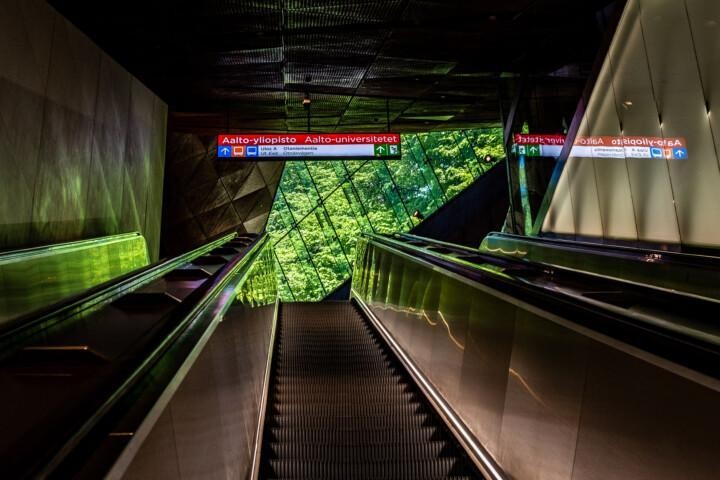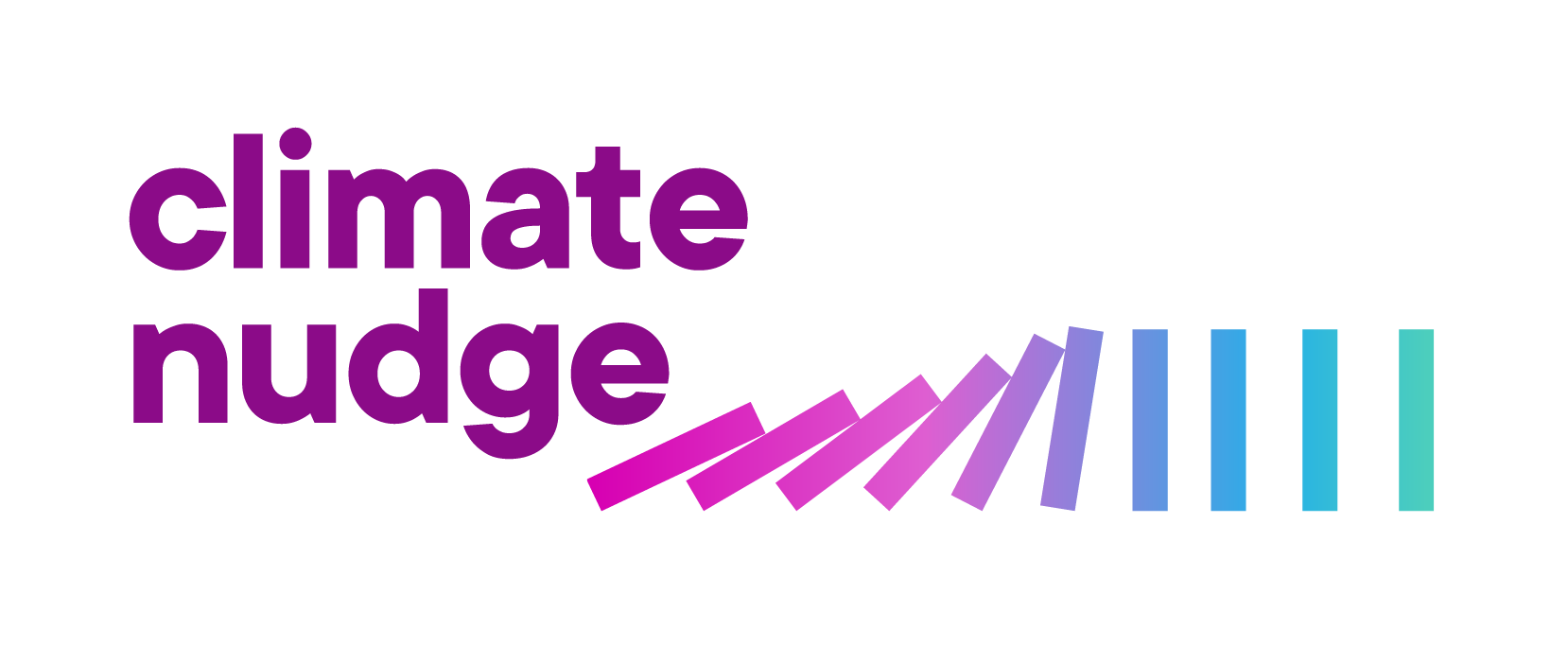
Sustainable transportation in urban areas
Cities play a key role in addressing climate change—they can serve as hubs for new ideas and behaviour changes that help reduce environmental harm.
Today, more than half of the world’s population (55%) lives in urban areas, and this number is expected to rise to 70% by 2050 (Buchanan, 2019).
Urban areas offer opportunities to lower per capita energy consumption, but they also present challenges, such as traffic congestion, which wastes time, increases energy use, and contributes to CO₂ emissions (Buchanan, 2019). Transport is one of the most significant contributors to environmental and health issues. It accounts for about a quarter of the EU’s total greenhouse gas emissions and is a substantial source of air and noise pollution, as well as habitat fragmentation. In 2022, greenhouse gas emissions from transport in the EU were about 26% higher than in 1990 (European Environment Agency, 2024). In 2022, cars accounted for almost three-quarters (73%) of passenger kilometers traveled in the EU, and kilometers driven by cars increased by 25% from 1995 to 2022. Meanwhile, the use of more sustainable public transportation modes, such as buses, trams, and metros, has remained relatively stable. (European Environment Agency, 2024).
The EU’s Green Deal strategy aims to reduce transport emissions by 90% by 2050. Achieving this goal will require a substantial shift toward more sustainable transportation solutions and the widespread adoption of alternative fuels (European Commission, 2024). Expanding public transport and promoting cycling in the EU holds great potential for reducing greenhouse gas emissions. Public transit systems, especially those powered by electricity or rail, play a crucial role in this transition, as they help reduce dependence on private cars, which account for around 40% of road transport emissions in the EU (European Commission, 2024).
To effectively reduce the environmental impact of mobility, it is essential to encourage a shift toward active (walking and cycling) or collective (public transport) travel modes and improve access to local services. This approach should complement technology-based policies (OECD, 2021). While investing in sustainable infrastructure is an important step, it must be paired with efforts to change individual travel habits. Encouraging people to adapt and take ownership of new mobility routines is crucial for long-term success. Engaging citizens in co-creating and reshaping their mobility habits can lead to lasting behavior change and help foster a culture of sustainable transport.
Why promote public transportation
Environment
- Public transport—including urban rail, metros, trams, buses, water buses, ferries, and cable cars—is one of the safest, most efficient, and most sustainable ways for people to travel. As cities move towards zero-emission mobility, hydrogen and battery-electric buses are playing an increasingly important role. These technologies are rapidly expanding across the EU, making public transport cleaner and more environmentally friendly.
Health
- Lower risk of obesity: Public transport encourages physical activity, as most trips begin or end with walking. This built-in movement provides an important opportunity for exercise. Studies consistently show a link between public transport use and increased physical activity (Patterson et al., 2019; Webb et al., 2012). According to a systematic review (Rissel et al., 2012), if just 20% of inactive adults walked 16 minutes more per day, five days a week, the number of adults meeting recommended activity levels would rise by nearly 7%. Walking more or increasing public transport use among inactive adults could further boost overall physical activity levels.
- Improved well-being: Enhancements in public transport infrastructure, such as adding direct commuter rail lines to reduce transfers, can lower commuting stress and improve passenger well-being (Wener et al., 2005).
Mobility
Public transportation offers several advantages over single-occupancy vehicles, making travel more affordable, efficient, and sustainable.
- Cost-Effective: Using public transport is typically much cheaper than owning a car, helping people save on fuel, parking, and maintenance costs.
- Environmentally Friendly: Public transport reduces the number of cars on the road, lowering carbon emissions and contributing to climate change mitigation.
- Less Traffic Congestion: With more people using buses, trains, and trams, fewer cars are on the road, leading to smoother traffic flow and fewer traffic jams.
- Accessible for Everyone: Public transport provides a vital mobility option for those who do not own a car, including seniors, students, and low-income individuals.
Inclusion
Access to transportation and walkable environments plays a crucial role in preventing social exclusion and fostering stronger communities (Boniface et al., 2015; Currie & Stanley, 2008; European Commission, 2024).
Public transport naturally encourages social interaction, as it brings people together in shared spaces. These everyday encounters offer valuable opportunities to engage with individuals outside one’s usual social circles, helping to build social capital (Currie & Stanley, 2008). Research has shown that even brief interactions with strangers on a bus or train can enhance positive experiences and boost happiness (Epley & Schroeder, 2014).
For more insights into the benefits of sustainable mobility, you can explore the WHO report on walking and cycling: Walking and cycling: latest evidence to support policy-making and practice.
How can behavioral science be used to promote sustainable transportation?
Findings from behavioral sciences, so-called behavioral insights, can support the use of more coercive approaches, such as taxes or subsidies (such as for electric cars) (Sunstein, 2020). Mandates and bans might have a behavioral justification. If a nation imposes energy-efficiency requirements, it might be because of an understanding of people’s imperfect choices stemming from unrealistic optimism, limited attention, or present bias. One effective behavioral strategy is nudging, a subtle way to influence behavior without restricting choices. Nudges do not replace regulations but complement them. For example, while smoking in public places may be banned, additional nudges—such as graphic warning labels—help reinforce the desired behavior.
This handbook offers practical guidance on developing and implementing behavioral interventions tailored to your city’s or region’s needs. The goal is to develop effective strategies that encourage public transport use, primarily through soft measures. We demonstrate how these interventions can incorporate choice situational factors, such as psychological, physical, and social drivers and barriers, which are vital for citizens’ mobility decisions, thereby enhancing their effectiveness. By connecting theory with practice, we provide examples of implementing soft interventions that promote sustainable mobility.
Literature list
Abraham,C., & Denford, S. 2020 in Hagger, M. S., Cameron, L. D. (Linda D., Hamilton, K., Hankonen, N., & Lintunen, T. (2020). The handbook of behavior change. Cambridge University Press.
Boniface, S., Scantlebury, R., Watkins, S. J., & Mindell, J. S. (2015). Health implications of transport: Evidence of effects of transport on social interactions. Journal of Transport & Health, 2(3), 441–446. https://doi.org/10.1016/j.jth.2015.05.005
Bothos, E., Prost, S., Schrammel, J., Röderer, K., & Mentzas, G. (2014). Watch your emissions: Persuasive strategies and choice architecture for sustainable decisions in urban mobility. PsychNology Journal, 12(3), 107–126.
Brent, D. A., Cook, J. H., & Olsen, S. (2015). Social comparisons, household water use, and participation in utility conservation programs: Evidence from three randomized trials. Journal of the Association of Environmental and Resource Economists, 2(4), 597–627. https://doi.org/ 10.1086/683427
Buchanan, M. (2019). The benefits of public transport. Nat. Phys. 15, 876. https://doi.org/10.1038/s41567-019-0656-8
Craig, P., Dieppe, P., Macintyre, S., Michie, S., Nazareth, I., & Petticrew, M. (2008). Developing and evaluating complex interventions: the new Medical Research Council guidance. BMJ, 337(7676), 979–983. https://doi.org/10.1136/bmj.a1655
Currie, G., & Stanley, J. (2008). Investigating Links between Social Capital and Public Transport. Transport Reviews, 28(4), 529–547. https://doi.org/10.1080/01441640701817197
Dolan, P., Hallsworth, M., Halpern, D., King, D. & Vlaev, I. (2010). Mindspace: influencing behavior for public policy. Institute of Government, London, UK.
Eldridge, S. M., Lancaster, G. A., Campbell, M. J., Thabane, L., Hopewell, S., Coleman, C. L., Bond, C. M., & Lazzeri, C. (2016). Defining feasibility and pilot studies in preparation for randomised controlled trials: Development of a conceptual framework. PloS One, 11(3), e0150205–e0150205. https://doi.org/10.1371/journal.pone.0150205
European Commission: Directorate-General for Mobility and Transport. (2024). Transport in the European Union: current trends and issues. Publications Office of the European Union. https://data.europa.eu/doi/10.2832/131741.
European Environment Agency. (2024). Transport and mobility.
Epley, N., & Schroeder, J. (2014). Mistakenly seeking solitude. Journal of Experimental Psychology: General, 143(open in a new window), 1980–1999. doi: 10.1037/a0037323
Gabrielli, S., Forbes, P., Jylhä, A., Wells, S., Sirén, M., Hemminki, S., Nurmi, P., Maimone, R., Masthoff, J., & Jacucci, G. (2014). Design challenges in motivating change for sustainable urban mobility. Computers in Human Behavior, 41, 416–423. https://doi.org/10.1016/j.chb.2014.05.026
Gravert, C., & Olsson Collentine, L. (2021). When nudges aren’t enough: Norms, incentives and habit formation in public transport usage. Journal of Economic Behavior & Organization, 190, 1–14. https://doi.org/10.1016/j.jebo.2021.07.012
Hauslbauer, A.L., Schade, J., Drexler, C.E. et al. Extending the theory of planned behavior to predict and nudge toward the subscription to a public transport ticket. Eur. Transp. Res. Rev. 14, 5 (2022). https://doi.org/10.1186/s12544-022-00528-3
Halpern, D. (2015). Inside the Nudge Unit: How Small Changes Can Make a Big Difference. New York: Random House.
Kallbekken, S., & Sælen, H. (2013). ‘Nudging’ hotel guests to reduce food waste as a win–win environmental measure. Economics Letters, 119(3), 325–327. https://doi.org/10.1016/j.econlet.2013.03.019
The behavioral insights Team. (2024). EAST: Four simple ways to apply behavioral insights. London, UK.
Kristal, A. S., & Whillans, A. V. (2020). What we can learn from five naturalistic field experiments that failed to shift commuter behaviour. Nature Human Behaviour, 4(2), 169–176. https://doi.org/10.1038/s41562-019-0795-z
Lieberoth, A., Holm Jensen, N., & Bredahl, T. (2018). Selective psychological effects of nudging, gamification and rational information in converting commuters from cars to buses: A controlled field experiment. Transportation Research Part F: Traffic Psychology and Behaviour, 55, 246–261. https://doi.org/10.1016/j.trf.2018.02.016
Michie, S., van Stralen, M. M., & West, R. (2011). The behaviour change wheel: a new method for characterising and designing behaviour change interventions. Implementation Science : IS, 6(1), 42–42. https://doi.org/10.1186/1748-5908-6-42
OECD (2021), Transport Strategies for Net-Zero Systems by Design, OECD Publishing, Paris, https://doi.org/10.1787/0a20f779-en.
Patterson, R., Webb, E., Hone, T., Millett, C., & Laverty, A. A. (2019). Associations of Public Transportation Use With Cardiometabolic Health: A Systematic Review and Meta-Analysis. American Journal of Epidemiology, 188(4), 785–795. https://doi.org/10.1093/aje/kwz012
Rissel, C., Curac, N., Greenaway, M., & Bauman, A. (2012). Physical activity associated with public transport use-a review and modelling of potential benefits. International Journal of Environmental Research and Public Health, 9(7), 2454–2478. https://doi.org/10.3390/ijerph9072454
Rosenfield, A., Attanucci, J. P., & Zhao, J. (2020). A randomized controlled trial in travel demand management. Transportation, 47(4), 1907–1932. https://doi.org/10.1007/s11116-019-10023-9
Sottile, E., Giacchetti, T., Tuveri, G., Piras, F., Calli, D., Concas, V., Zamberlan, L., Meloni, I., & Carrese, S. (2021). An innovative GPS smartphone based strategy for university mobility management: A case study at the University of RomaTre, Italy. Research in Transportation Economics, 85(2), 100926. https://doi.org/10.1016/j.retrec.2020.100926
Sunstein, C. R. (2020). Behavioral Science and Public Policy. Cambridge: Cambridge University Press.
Thaler, R.H., Sunstein, C.R. (2009). Nudge: Improving Decisions About Health, Wealth, and Happiness. Penguin.
Turnwald, B. P., et al. (2019). Increasing Vegetable Intake by Emphasizing Tasty and Enjoyable Attributes: A Randomized Controlled Multisite Intervention for Taste-Focused Labeling. Psychological Science, 30(11), 1603–1615.
Webb, E., Netuveli, G., & Millett, C. (2012). Free bus passes, use of public transport and obesity among older people in England. Journal of Epidemiology and Community Health (1979), 66(2), 176–180. https://doi.org/10.1136/jech.2011.133165
Wener, R., Evans, G., & Boately, P. (2005). Commuting stress: Psychophysiological effects of a trip and spillover into the workplace. Transportation Research Record: Journal of the Transportation Research Board, 1924, 112–117.
Go back to Nudge Handbook main page (laita linkki)
Move to Design your own Nudges page (linkki)
Move What is Nudging page (linkki)
